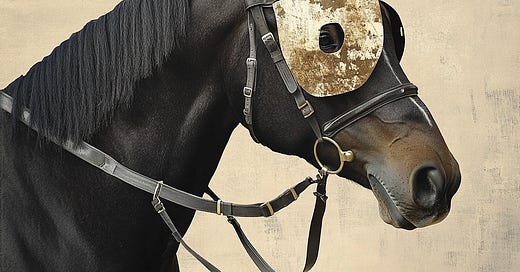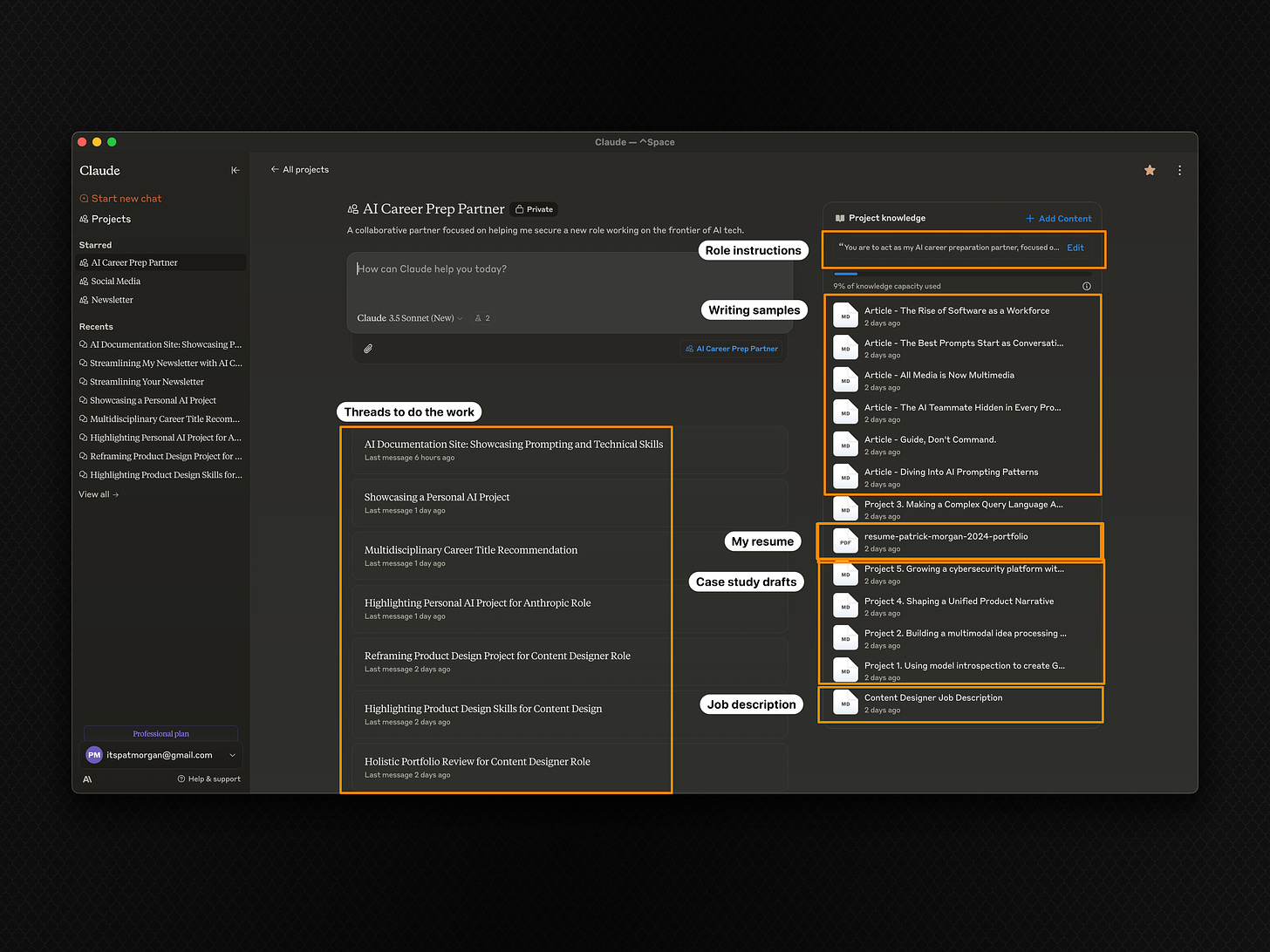Narrowing AI's Field of View
How I'm transforming general-purpose AI into my specialized project partner
Welcome to Unknown Arts, where creativity flows through new technology. Ready to forge ahead into the unknown? Join the journey!
🌄 Into the Unknown
This week, I've been deep in the weeds of portfolio revision, aiming to align my materials with my new AI focus. What started as a daunting solo project improved dramatically when I applied context-setting techniques to transform Claude from a general purpose AI tool into a focused collaboration partner.
For anyone who's created a professional portfolio, you know the challenge—it's a complex project full of decisions about structure and narrative. Without a collaborator, it's easy to get stuck overthinking every choice. By setting up Claude with a clear job description as an anchor, I was able to get a fresh perspective on my work through the hiring company's lens while preserving my authentic voice and experience.
With this context in place, I could analyze my skills against role requirements, identify gaps and strengths, and determine how to align my work effectively. It's like having a bridge-builder helping me connect all the pieces of my professional experience to this new career direction.
🧭 The Compass
The power of context-setting lies in its ability to focus AI's vast knowledge base on your specific needs. Imagine a horse in a busy environment—just as blinders help it focus on the path ahead, proper context helps direct AI's "gaze" toward your goals.
Here's how I structured my approach:
Instruction Set: I defined Claude's role as a job application companion, creating the first layer of "blinders" that shaped our interaction
Target Parameters: The job description served as our guiding path—a specific point on the horizon for Claude to keep in sight while analyzing my materials
Current Assets: From resume to case studies to writing samples, I provided my existing materials so Claude could understand where we were starting from
This focused approach transformed generic AI responses into targeted insights perfectly aligned with my objectives. Instead of pulling solely from its general knowledge base, Claude could draw on my specific parameters to offer relevant, streamlined support.
🗝️ Artifact of the Week
This week's artifact is the Claude Project I've been using to guide my portfolio revision. While the best way to understand Claude Projects and OpenAI GPTs is to create one, here are some documentation links that might come in handy.
📝 Field Note
For anyone getting started with context-setting, focus first on curating your foundational materials. While I had some assets available, I still needed to gather the right mix of documents to effectively narrow Claude's field of view. I’ve found two types of content particularly valuable to include (which align with core AI concepts like few-shot learning and chain-of-thought reasoning):
Reference Examples: Reference materials that demonstrate what you're trying to achieve. In my case, this included draft case studies and writing samples that demonstrated the structure and tone I was aiming for. These helped direct the AI's attention to the right structural and stylistic elements.
Reasoning Documents: Materials that explain your thinking and preferences. For my portfolio revision, this included notes about why I chose certain projects to highlight, my thought process within those projects, and my desire to authentically represent my past while building a compelling case for the future. These helped the AI understand my decision-making process and priorities.
Including both types of content in your AI workspace helps create those essential, contextual "blinders," focusing the AI on your specific goals and standards.
🕵 Ready to Explore?
Here’s this week’s mission (should you choose to accept it):
Focus an AI on your next project
Choose a Goal: Pick a specific objective that matters to you— applying to a job, synthesizing research, etc…
Gather Resources: Collect relevant materials that provide concrete examples and parameters
Set Up Context: Create a new Claude Project or Custom GPT, upload your resources, and provide clear instructions about how you want the AI to assist
Check the View: Test if your context is working by asking the AI to summarize its understanding of your goals and materials. If its view is too broad or misaligned, adjust your materials and instructions until you see better focus
Final Thoughts
Through this portfolio revision process, I've learned that the key to getting high-value work from AI isn't just better prompts—it's a focused environment for collaboration.
When you narrow an AI's field of view to exactly what matters to you, it shifts from knowing everything about anything to knowing everything about your thing.
Now that's the kind of specialist I want in my corner.
Until next time,
Patrick
Help grow the Unknown Arts AI Knowledge Base
I’m curating a thoughtful collection of resources to promote the true creative power of AI. Browse the website or the Github repo, and if you have an AI resource that genuinely helped you, I’d love to hear about it.
Get some value from this? Share it with a friend.







